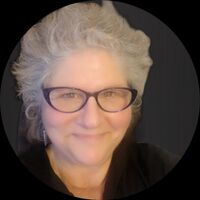Ann Marcus: Difference between revisions
No edit summary |
No edit summary |
||
| (One intermediate revision by one other user not shown) | |||
| Line 4: | Line 4: | ||
|lastname=Marcus | |lastname=Marcus | ||
|company=Marcus Consulting Group | |company=Marcus Consulting Group | ||
|position=Chief Communication | |position=President & Chief Communication Officer | ||
|location=Portland | |location=Portland OR | ||
|country=United States | |country=United States | ||
|sector=Education, Wireless | |skill=ethnomethodolgy, sociology, Spanish-speaking, Communications, Executive Communications, Team leadership, Community engagement, systems analysis, information architecture, knowledge management, smart cities, internet of Things (Iot), Digital Transformation | ||
|active=Yes | |||
|sector=Buildings, Education, Wellbeing, Wireless, Broadband, Resilience, Informational, Smart Buildings | |||
|linkedin=https://www.linkedin.com/in/annmarcus | |linkedin=https://www.linkedin.com/in/annmarcus | ||
}} | }} | ||
Latest revision as of 00:59, January 24, 2024

| ||
| Name | Ann Marcus | |
| Company | Marcus Consulting Group | |
| Company Position | President & Chief Communication Officer | |
| City, State | Portland OR | |
| Country | United States | |
| Sectors | Buildings Education Wellbeing Wireless Broadband Resilience Informational Smart Buildings | |
| Consulting: ethnomethodolgy, sociology, Spanish-speaking, Communications, Executive Communications, Team leadership, Community engagement, systems analysis, information architecture, knowledge management, smart cities, internet of Things (Iot), Digital Transformation | ||
Activities

|
CIVIC school HUBS | |
| NSF CIVIC grant to incubate the Federal School Infrastructure Toolkit for more resilience Community services. A pilot program with be developed with the BENSON school district in Portland, and woven into the urban/rural network of the Metro regional emergency response. | ||

|
Open 988 | |
| 988 has been designated as the new three-digit dialing code that will route callers to the National Suicide Prevention Lifeline. While some areas may be currently able to connect to the Lifeline by dialing 988, this dialing code will be available to everyone across the United States starting on July 16, 2022. | ||

|
Oregon middle-mile fiber broadband network | |
| Link Oregon, the non-profit, middle-mile broadband network serving Oregon’s
public and non-profit sectors, delivered the first two phases of its statewide network backbone in June 2021, having successfully lit nearly 2,000 route-miles of fiber-optic cable and deployed more than 50 service locations across Oregon. | ||

|
School Organized Locally Assisted Community Emergency‐Management | |
| The School Organized Locally Assisted Community Emergency‐Management (SOLACE) project focused on the use of a community school as a community resilience hub for its surrounding community. Community Resilience Hubs (CRHs) can be defined as community‐serving facilities augmented to support residents and coordinate resource distribution of resources and services to the surrounding community. This project focused specifically on the use of a CRM to support community member needs before, during, or after a natural hazard event and on developing a community‐led sociotechnical infrastructure framework for adapting a public school (Buckman Elementary School) as the pilot CRH. In 2022, this project received a NSF Planning Grant. | ||

|
Smart City Diaries TV Video Series | |
| Smart City Diaries is a documentary television and podcast series that showcases the phenomenon of digital transformation in small and large cities in the developed and developing world. Destination cities will have undertaken smart city initiatives to transform the way they manage their city operations and provide information and services to their residents. Each city has unique physical, social and cultural qualities; the series highlights individuals across cultures to understand how rapidly changing technologies impact how they live, work, play and learn.
The series will be hosted by a mother and daughter team: Deborah Acosta and Anna Acosta. Their perspectives differ as do their attitudes and levels of comfort with new technologies: one is a baby boomer, the other a millennial. One was CIO for a small California city, the other is a musician, songwriter, social justice blogger and social media expert. They are both smart and sassy, ready to explore a range of cities and the people who are impacted by smart city digital transformations. Through the eyes of these two women, each episode reveals how unique locations approach meeting the quality-of-life demands of residents, businesses and visitors through increased use of technology in an era of the Internet of Things, shifting populations and shrinking budgets and resources. | ||

|
Resilience Hubs | |
| This chapter demonstrates how integrated smart systems that draw on a number of technologies, processes, and data can enable a community structures to function more efficiently for their main purpose as well as be prepared to serve as a “community resiliency hub” and/or “emergency shelter” as needed. Selecting a school as a community resilience hub leverages its existing function for families already charged with protecting children, employing vetted professionals, and communicating with parents, public safety agencies, and city government as well as embuing the school with some additional important functions and responsibilities to an extended community population. (The pilot for this project--using the Buckman School in Portland, Oregon--received a National Science Foundation Planning Grant in 2022.) | ||